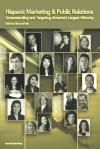Posted by Elena del Valle on June 23, 2010
By Harald H. Vogt
Founder and chief marketer, Scent Marketing Institute

Harald H. Vogt, founder and chief marketer, Scent Marketing Institute
Photo: Scent Marketing Institute
Information transported via our perception of scent does not require translation. There is no “Press 1 for English, 2 for Spanish” when it comes to recognizing the scent of fresh baked bread, ultimately drawing us to it’s source, the bakery on the corner or in the supermarket. Scent can be a guide, or it can create a desire, even an emotion without a word being spoken.
Scents are processed in the limbic system of our brain, which happens to be responsible for the decision-making process and for our emotions. With that “internal wiring” already in place it takes fairly little to trigger a person to react in a certain way.
Click here to read the entire article Scent communication – no language barriers apply!
Posted by Elena del Valle on June 16, 2010
Better Communication for your Clients with Hearing Loss
By
Martha E. Galindo, language translations provider
Lauren E. Storck, Ph.D., founder, Collaborative for Communication Via Captioning
Karen Yates, certified CART provider

Karen Yates, certified CART provider

Lauren E. Storck, Ph.D., founder, Collaborative for Communication Via Captioning

Martha E. Galindo, language translations provider
As people age, they often face changes in their abilities. One such change is the likelihood that they will develop hearing loss. Although hearing loss affects approximately 12 percent of the general U.S. population, that number rises to over 65 percent in the elderly. In any ethnicity. In any gender. Loss of hearing can interfere with a person’s enjoyment of his or her current and former activities, leads to isolation, and creates communication challenges in family, work and social settings.
Broadcast captioning – written text of the spoken word that scrolls at the bottom of television programs and movies – has gained acceptance and is much appreciated by people with hearing loss. In any language. What many people don’t know is that that same type of service is available out in the community, too. Communication Access Realtime Translation (CART) is a word-for-word speech-to-text instantaneous interpreting service provided by trained professionals using machine shorthand (or sometimes voice recognition software) and computers equipped with special translation software. Many of these CART providers were first trained as court reporters, professionals very familiar to many who work in the legal system for example.
Click here to read the complete article
Posted by Elena del Valle on June 2, 2010
Opening the Door with Relevant Products and Services Part Two (click here to read Part One)
By Ricardo Quayat
Executive Creative Director, Rauxa Roja

Ricardo Quayat, executive creative director, Rauxa Roja
Photo: Rauxa Roja
In Part One of Unleashing the Financial Purchasing Power of the Growing U.S. Hispanic Population (click here to read Part One), Ricardo Quayat discussed recognizing the huge potential of the vast Hispanic market and how to use data, creative and brand strategies to market to this promising audience in a meaningful and actionable way. Part Two explores cultural differences that affect the Hispanic consumer and how banks and financial institutions can effectively tap into this rapidly growing and financially sound market with relevant messages, products and services.
Culture-Based Banking
In Mexico, and South and Central America, banks employ practices that are unique to their specific regions, capitalizing on how locals save money, buy products and pay bills. Evaluated against standard banking models in the U.S. however, Latinos are turned away in many instances because conventional credit platforms may not reflect the credit worthiness the bank requires, creating a missed opportunity.
For example, payment plans with routine installments are a common purchasing method in Latin American countries, where it is preferred to have a predictable monthly responsibility. These may be personal agreements and traditional credit programs – commonplace in Latin America, but ineffectual in establishing the stability and sound payment records typically verified using traditional credit scoring methods.
Click here to read the complete article
Posted by Elena del Valle on May 26, 2010
Opening the Door with Relevant Products and Services Part One (Part Two will be published next week)
By Ricardo Quayat
Executive Creative Director, Rauxa Roja

Ricardo Quayat, executive creative director, Rauxa Roja
Photo: Rauxa Roja
Today’s Hispanic consumer has more household wealth and economic influence than ever before. U.S. businesses – and particularly financial institutions – are taking notice, placing more importance on the development of appropriate methods to attract and keep customers in this growing segment. In fact, with U.S. Hispanics expected to control almost $1 trillion in purchasing power by 20101, banks are scrambling to maximize this huge under-served marketplace with culturally relevant products and services.
Younger than the general population, and on the move in socioeconomic terms, this emerging market has the potential to redefine mainstream banking programs and products. And by understanding cultural subtleties and nuances, bank marketers can develop data-driven, culture-based strategies and tactics for precisely targeted campaigns with messaging that appeals to Hispanic prospects and customers on both an emotional and rational level.
Click here to read the entire article
In Part Two of this two-part series Ricardo Quayat will explore the cultural differences that affect the Hispanic consumer and how banks and financial institutions can effectively tap into this rapidly growing and financially sound market with relevant messages, products and services.
Posted by Elena del Valle on May 17, 2010

Staff cuts not withstanding many media outlets have survived the transition from traditional formats to today’s multimedia mix. It may be that the new formats brought some changes for the better such as increased efficiency. For example, at some media outlets a single enterprising young journalist reports, produces and captures video footage for his or her story. And newspaper editors express satisfaction with the new technology oriented staff that have been brought on board in recent years and their willingness to try new things.
In spite of that future funding is a source of concern for many news executives when it comes to the long term viability of their media outlets, according to a recent study. Alternative funding options, including government financing, are not appealing for them and they worry about their outlet’s survival over the next decade unless they are able to figure out a viable source of funding to replace the old business model.
Two thirds of survey respondents had serious reservations about receiving government subsidies and 78 percent were not interested in accepting funding from interest groups. About 50 percent were worried about funds from government tax credits and more 33 percent had doubts about private donations.
Online most of the media efforts are focused, according to the participants in the survey, on traditional sources of revenue such as display and banner ads. These remain the main area of effort and the one survey respondents had the highest hopes would yield results. Another area under consideration was revenue from products outside of news.
The results of the survey, conducted by Pew Research Center’s Project for Excellence in Journalism in association with the American Society of News Editors (ASNE) and the Radio Television Digital News Association (RTDNA), were released last month.
“Our mantra this year is experiment and fail quickly,” said a newspaper news executive who participated in the survey. “Don’t be afraid of change and don’t stick with something too long if it doesn’t work.”
“Outside funding options are a bad idea overall,” said a broadcast news executive survey respondent. “They are being used to ‘save’ old models of journalism that are no longer economically viable and will die out over time no matter what.”
Interestingly, there were significant differences between the attitudes of survey respondents from newspaper-based newsrooms and those of broadcast outlets including their view of journalism’s future. Broadcast news executives were more pessimistic with almost twice as many respondents who viewed journalism as headed in the wrong direction compared to those who thought it is headed in the right direction. Newspaper news executives were slightly more optimistic.
Many executives in marketing, advertising and public relations may believe the future of media is closely linked to their career future and seek an understanding of the possible direction of print and broadcast media to better serve their clients and their professional futures.
The researchers received responses from 353 journalism executives from the ASNE or RTDNA membership lists after inviting them to participate in the online survey by email between December 2009 through January 2010. Of the 353 news executives 36 percent were ASNE members and 24 percent were RTDNA members.
Posted by Elena del Valle on April 28, 2010
By Astrid Rial
President, Arial International

Astrid Rial, president, Arial International
Photo: Arial International
Companies who recruit bilingual talent to service Spanish-speaking customers seek associates who can effectively communicate in both English and Spanish. In the last few years we have observed that many more companies in the U.S. are providing additional compensation in the form of a bilingual premium or differential to bilingual associates.
Many Spanish speakers in the US speak colloquial or familiar Spanish, so the challenge for recruiters is to objectively verify that bilingual job candidates are able to competently communicate in professional and appropriate Spanish for business situations. Unless an interviewer is fully fluent in both languages, it is difficult, if not impossible, to distinguish between casual and business Spanish.
Click here to read the complete article Recruiting and Remunerating Spanish Speakers
Posted by Elena del Valle on April 14, 2010
By Marcelino Miyares, Jr.
Director, Mercury Media en español

Marcelino Miyares Jr., director, Mercury Media en español
Photo: Mercury Media en español
A bottom line is a bottom line no matter what we call it. That is why I am a convert to the strategic importance of Hispanic Direct Response TV (DRTV). Taking a DRTV approach to the Hispanic market is a proven and valid model for Hispanic marketing because it focuses attention on the bottom line, not just the investment.
The Hispanic segment has reached critical mass as a demographic and few argue its potential contribution to virtually any brand’s performance in the general marketplace. Thanks to Hispanic DRTV, this is now measurable; and more to the point, allows marketers to forecast and optimize the ROI of a Spanish-language media budget.
Click here to read the complete article Hispanic Direct Response TV Apples are Manzanas
Posted by Elena del Valle on March 24, 2010

Food product labels include a list of ingredients
Photo: HispanicMPR.com
Can you tell which of the following four sweeteners, fructose, dextrose, sucralose and acesulfame potassium, is natural and which is artificial? If you know that the first two are natural sugars and the other two are artificial sugars you may be among 4 percent of surveyed respondents who knew the answer. The other 96 percent were not be able to identify the difference. Knowing what ingredients are contained in a product only helps, some advocates of enhanced food products labeling argue, if consumers know what the ingredients are.
If, like in this artificial versus natural sweeteners example, they don’t know a natural sweeter from any other ingredient listing the ingredients may offer few insights when consumers are making purchasing decisions based on nutritional content. Experts point out that often consumers have heard of the brand names like Equal but do not know the generic name like aspartame.
The confusion may be aggravated by the significant increase in sweeteners since labeling regulations began. Where there used to be five sweeteners there are now 27, according to a recent The Palm Post article. In 2005, the Sugar Association filed a petition with the Food and Drug Administration (FDA) requesting a labeling change to make it clear to buyers when there are artificial sweeteners in a product. A study, conducted by Harris Interactive and commissioned by the Sugar Association, indicates most parents of children 18 and younger prefer to avoid artificial sweeteners for their children.
With the high incidence of diabetes, obesity and chronic diseases related to dieting some believe truth and clarity in labeling are more important than ever. Among Latinos many of whom are at high risk of diabetes (see Exercise specialist, researcher explore diabetes issues relevant to Latinos) the issue may be aggravated by cultural practices and preferences and labeling, especially of chemical sounding and unfamiliar ingredients, may do little to help. That is not even taking into account Spanish dominant Latinos who have difficulty reading labels in English.
Executives at the Center for Science in the Public Interest are so convinced of the public confusion about labels that in December 2009 they sent a 150-page report, Food Labeling Chaos: the Case for Reform, to the FDA about false and misleading food labels. The report emphasizes three problem areas: the Nutrition Facts Panel, ingredient labels and false and misleading health-related claims.
They highlight a cereal (Kashi, owned by Kellogg) that promises “healthy arteries” from green tea ingredients although there is no FDA approval of such a relationship (between green tea and healthy arteries); an English muffin brand (Thomas’ Hearty Grains English Muffins) that touts whole grain although the main ingredient is “unbleached enriched wheat flower;” and fruit juices (Gerber Graduates Juice Treats) with pictures of fruits on the labels that are not contained in the juices.
The Center for Science in the Public Interest dual missions are to “conduct innovative research and advocacy programs in health and nutrition, and to provide consumers with current, useful information about their health and well-being.”
Posted by Elena del Valle on March 17, 2010
By Edward M. Bury, APR

Edward M. Bury, APR
Communicators today need to maximize every resource available to make sure messages reach their target audiences, and perhaps a few more. This is especially true in an era when online communications and social media continue to eclipse traditional print and broadcast media in many ways.
The social media news release (SMR) has emerged as an option to help communicators deliver messages effectively and efficiently without relying on the traditional or mainstream media. In short, social media news releases are a communications tool that lets groups, companies and organizations self-publish messages online. It’s a relatively new resource, but one that every communicator needs to understand and incorporate into public relations and marketing programs.
Click here to read the complete article
Hispanic Marketing and Public Relations Understanding and Targeting America’s Largest Minority book

“A must resource for practitioners/professionals expecting to reach US Hispanics; also valuable for college programs in marketing, public relations and communications. Highly recommended.”
Choice magazine
Click here for information on the Hispanic Marketing & Public Relations book
Posted by Elena del Valle on March 3, 2010
By Martha Galindo
CEO and president, Galindo Publicidad Inc.

CEO and president, Galindo Publicidad Inc.
Photo: Martha Galindo
Press releases are a great way to get some coverage from media outlets, in any language.They’re also a great way to break into new markets, especially foreign language ones. That’s a strategy more companies are starting to adopt. There are thousands of non-English language media outlets, and they offer a great opportunity for companies to get their message in front of a new audience.
The non-English U.S. market can be substantial. According to recent reports there are 2,453 unique U.S. Hispanic media outlets, including more than 1,200 print publications, and more than 1,000 TV and radio outlets and shows. There are also twenty AP-style wire services and news syndicates. In some cases these are the only media serving a particular Hispanic community. Any company with a product that fits this market would do well to send press releases to these key outlets.
Click here to read the entire article
Discover how to reach Latinos in language today with
“Hispanic Market Translation Issues” audio recording

Presenter Martha E. Galindo
Translation company owner Martha E. Galindo explains
-
Why it’s important to reach your clients in language
-
Ins and outs of translations issues
-
How to select a translator
-
What to expect
-
How to save on translation costs
-
Much more
Reach clients in language with ”Hispanic Market Translation Issues”






















